Lectures
The Inamori School of Engineering hosts two annual lectures for fall and spring semesters. In addition, the School of Engineering hosts and co-sponsors many important conferences as a part of our Continuing Education Program for industry and professionals.
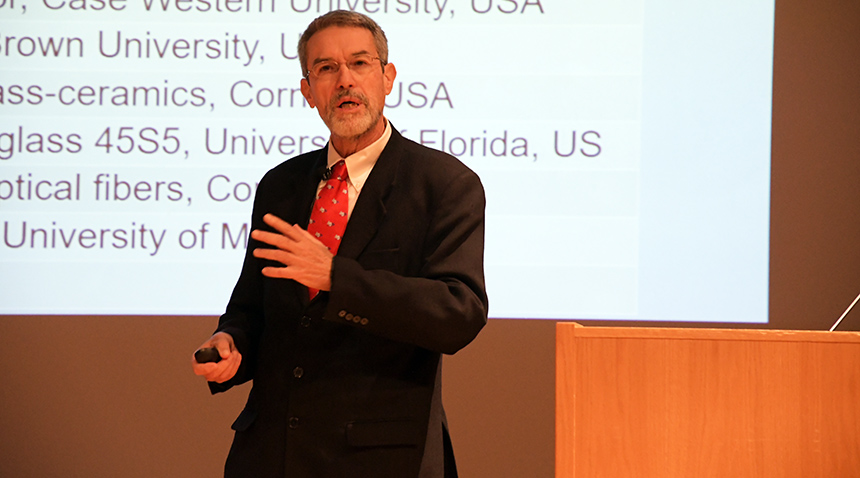
Samuel R. Scholes Award Lecture
2024 Lecture:
There and Back Again: A Journey in Glass
Dr. John C. Mauro
Department of Materials Science and Engineering
The Pennsylvania State University
Thursday, April 4, 2024 - 11:20 AM
Holmes Auditorium
Register for Luncheon
View Lecture Background, Biographies & Abstracts
John F. McMahon Award Lecture
2023 Lecture:
Atomistic Simulations to Advance Surface Science
Dr. Susan B. Sinnott
Professor and Head of the Department of Materials Science and Engineering
The Pennsylvania State University
Thursday, November 2, 2023 - 11:20 AM
Holmes Auditorium
Luncheon to Follow in The Knight Club - Powell Campus Center
View Lecture Background, Biographies & Abstracts
Dr. Samuel Ray Scholes served Alfred University and the Alfred community for over 40 years as dean (1946-1948), associate dean (1948 - 1952), head of the Department of Glass Technology, and professor of glass science (1932 - 1946). He established the first glass science program in the United States at the College of Ceramics in 1932. As a scientist devoted to the English language, Dr. Scholes developed the program for teaching technical writing at Alfred University. Dr. Scholes was educated at Ripon College (BA, 1905) and Yale University (PhD, 1911). He was a poet, scholar, and a scientific educator of the highest caliber who believed in glass as the "eye of science, the carrier of light."
For his contributions as a scholar, educator, administrator, and glass scientist, Dr. Scholes was honored by Alfred University with a honorary Doctor of Science degree. His name was also chosen for the Scholes Library of Ceramics, and the Samuel R. Scholes Lecture Series was established in honor of his interest in the history and philosophy of science.
As author of Modern Glass Practice, a highly acclaimed book on glass making, published continuously seven times between 1935 and 1975, Dr. Scholes helped standardize the process of glass making in the United States. He was author of three other books: Glass Industry Handbook, Glass Tank Furnaces, and Opportunities in Ceramics.
During his 19 years in the glass industry, he helped to develop automatic manufacture and general control of raw materials and standardization. He held patents for development of an improved glass-melting pot; a method of stirring optical glass; and extraction of potash from feldspar.
"...let us...each do our part in seeing that the materials inventions of our age are made to serve the high needs and destinies of the race..." -Samuel R. Scholes.
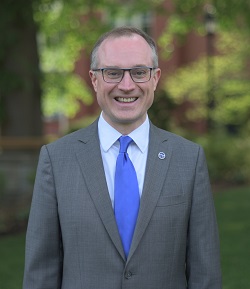
Scholes Lecture – NYSCC at Alfred University
Presenter: Dr. John C. Mauro, Department of Materials Science and Engineering, The Pennsylvania State University
Title: There and Back Again: A Journey in Glass
Abstract:
Glass is a lifelong passion for me, starting from my childhood in the Alfred-Almond area. In this presentation, I reflect on my personal journey in glass, from attending Scholes Lectures as a student at Alfred University through my return to Alfred today. I share my thoughts about how my education at Alfred University prepared me for success as both an industrial research scientist at Corning Incorporated and later in academia as a Professor of Materials Science and Engineering at Penn State. I review several advances in glass physics and chemistry made during this time, including the development of new methods for designing and understanding industrial glass systems. I conclude with some thoughts about the pursuit of industrial vs. academic careers.
Bio:
Dr. John C. Mauro is Dorothy Pate Enright Professor and Associate Head for Graduate Education in the Department of Materials Science and Engineering at The Pennsylvania State University. John earned a B.S. in Glass Engineering Science (2001), B.A. in Computer Science (2001), and Ph.D. in Glass Science (2006), all from Alfred University. He joined Corning Incorporated in 1999 and served in multiple roles there, including Senior Research Manager of the Glass Research department, where he led a group of 15 scientists and technicians in the development of new glass and glass-ceramic products. John joined the faculty at Penn State in 2017 and is a world-recognized expert in fundamental and applied glass science, statistical mechanics, computational and condensed matter physics, thermodynamics, and the topology of disordered networks.
John is the inventor or co-inventor of several new glass compositions for Corning, including Corning Gorilla® Glass products. John is a pioneer in the use of physics-based and machine learning models for the design of new glassy materials. He is the inventor of new models for supercooled liquid and glass viscosity, glass structure and topology, relaxation behavior, and thermal and mechanical properties. He is co-author of Fundamentals of Inorganic Glasses, 3rd ed. (Elsevier, 2019), the definitive textbook on glass science and technology, and author of Materials Kinetics: Transport and Rate Phenomena (Elsevier, 2021), the most comprehensive textbook on kinetic phenomena in materials science.
John was awarded the N.J. Kreidl Award (2006) from the American Ceramic Society, Glass and Optical Materials Division. In 2010, Penn State University and the International Commission on Glass (ICG) awarded John the W.A. Weyl International Glass Science Award. In 2011, John received the V. Gottardi Prize from the ICG, and in 2012 he was selected as the inaugural recipient of the Sir Alastair Pilkington Award from the Society of Glass Technology. In 2013, John was awarded the S. Donald Stookey Award for Exploratory Research from Corning Incorporated. In 2015, John became a Fellow of the American Ceramic Society and was recipient of the R.M. Fulrath Award. In the same year, he was also awarded the W.H. Zachariasen Award from the Journal of Non-Crystalline Solids. In 2016, the National Institute of Ceramic Engineers (NICE) selected John as winner of the Karl Schwartzwalder Professional Achievement in Ceramic Engineering (PACE) Award. John is also winner of Corning’s Ethnically Diverse Group of Employees (EDGE) Excellence Award (2016) for promoting diversity at Corning. More recently, John was elected as a Fellow of the Society of Glass Technology (2019) and is recipient of the Faculty of the Year Award (2019) at Penn State Materials Science and Engineering. John is also recipient of the Paul F. Robertson Award for Earth and Mineral Sciences Research Breakthrough of the Year (2020), the Faculty Scholar Medal from Penn State (2021), the Wilson Award for Excellence in Teaching (2022), the Fiat Lux Award from Alfred University (2022), and the Wulff Lectureship from MIT (2022). John also won first place in the Penn State Tech Tournament (2023) for the invention of LionGlassTM, a novel glass family that lowers the carbon footprint of glass manufacturing by ~50% while significantly improving mechanical performance.
John is the author of over 360 peer-reviewed publications and has given over 200 presentations at international conferences and seminars. His publications have been cited over 18,500 times, with an h-index of 60. John has 80 granted U.S. patents and several additional patents pending. John is Editor-in-Chief of Journal of the American Ceramic Society. John is a Member of the National Academy of Engineering, the National Academy of Inventors, and the World Academy of Ceramics.
Outside of his technical work, John is also a highly sought-after reviewer of speculative fiction and serves as Assistant Editor at Before We Go Blog and Grimdark Magazine. John has interviewed a multitude of well-known authors, including Patrick Rothfuss, Mark Lawrence, Fonda Lee, Gemma Amor, Jeff VanderMeer, Cassandra Khaw, Anna Smith Spark, and many more.
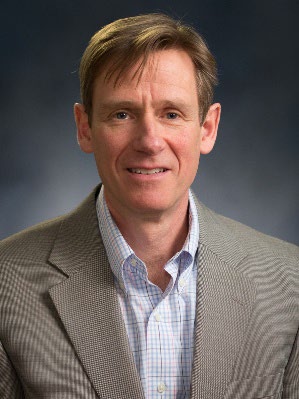
Scholes Lecture – NYSCC at Alfred University
Presenter: Jeff Kohli
Title: Invention, Innovation, and Industrialization
Abstract:
For more than 170 years, Corning has combined its unparalleled expertise in glass science, ceramics science, and optical physics with deep manufacturing and engineering capabilities to develop life-changing innovations and products. Exploration, invention, innovation, fundamental understanding, problem solving, optimization, scale-up, continuous improvement, transformational change, as well as market understanding are all important aspects of a successful and enduring technical, industrial institution, like Corning. Successful product development is closely linked with both evolutionary and revolutionary process technology innovation. The speaker will discuss these topics at a high level, put them into context, and provide real examples of exciting innovations at Corning, both past and present.
Bio:
Dr. Jeff Kohli is the Director of Glass Research at Corning Incorporated. Prior to his current role, Jeff was Business Technology Director, Corning® Gorilla® Glass, responsible for product and process development for the Gorilla Glass business. Jeff joined Corning in 1991 and has since worked in research, development, engineering and commercial-technology roles as a scientist, a project manager and organizational leader. He won the Science & Technology People Development Award at Corning in 2017. Jeff is a Fellow of the American Ceramic Society and is past chair of the Glass and Optical Materials division of ACerS (2004). He has been a member of ACerS since 1986. Jeff has served on the Ceramic & Glass Industry Foundation Board of Trustees and became a member of the advisory board of the Cornell Center for Materials Research in 2021. He has more than 20 publications, including book chapters, technical articles and proceedings, and holds more than 30 U.S. patents. Jeff holds B.S and M.S degrees in ceramic engineering and earned a Ph.D. in glass science, all from Alfred University.
Personal Reflections:
I have had the good fortune to make significant contributions to the invention and development of glass used for flat panel displays as the sole inventor for the seminal patent family covering Eagle XG® & Eagle 2000® (US 6,060,168, EP 0 960 075 B1, RE38959, RE41127), and the opportunity to work with hundreds of other people associated with Corning’s Display business. These flat panel displays and the glass that is used therein displaced bulky CRT technology previously used in televisions and desk top monitors. Moreover, these new glasses optimized for flat panels are significantly more environmentally conscious than those once used by the CRT industry.
I have also had the opportunity to be a major contributor to the development of Corning® Gorilla® Glass for more than a decade, as a inventor, project leader and technology director for the business. Many of us around the globe touch Gorilla Glass every day on touch-enabled consumer electronic devices! Additionally, I made contributions to the development of Er-doped fiber amplifiers, which helped replace copper cable as a primary means of written, voice, and video communication, enabling the Internet as well as modern 5G communications.
For me, glass is a incredibly unique material, used for vessels, windows, mirrors and artwork for centuries. It’s use for modern communications, lithography lenses or as carriers in semiconductor processes, modern AR/VR devices, exploration of space, and biomaterials are just a few examples of its value to humankind. I am proud to be an inventor and innovator of glass technologies, and I often reflect on the opportunities and teachers that helped guide me. Glass is my passion and my profession; let it shine light on all of you who are new to its technical and artistic wonders!
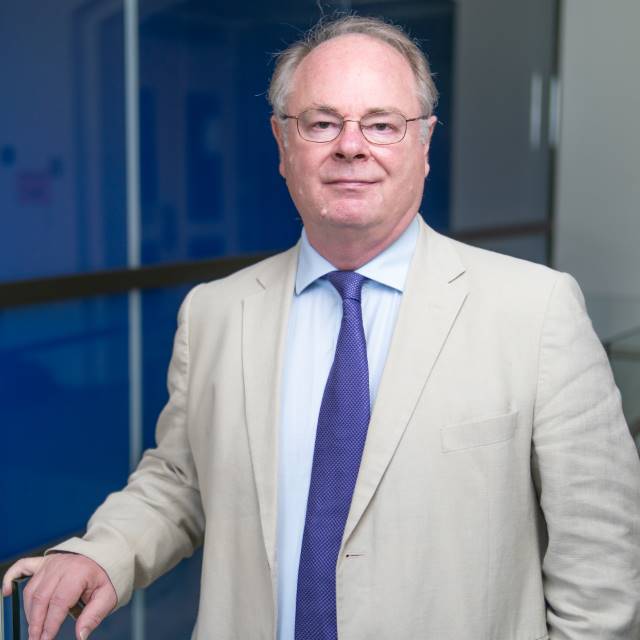
Dr. Alastair Cormack
Alastair Cormack is the Van Derck Fréchette Professor of Ceramic Science and Founding Dean of the Inamori School of Engineering at Alfred University. He holds a MA degree from the University of Cambridge and MSc and PhD degrees from the University of Wales, Aberystwyth. Following post-doctoral work at University College London (including a stay at the University of Chicago), he joined the faculty of the New York State College of Ceramics in 1985. Since then, he has held a number of administrative positions in addition to his research and teaching.
He is a Fellow of the Royal Society of Chemistry, a Fellow of the American Ceramic Society, a Fellow of the Society of Glass Technology and a Fellow of the Mineralogical Society. He has Chartered Scientist and Chartered Chemist status in the UK.
He has published extensively, with a h-index of 45, and is considered to be one of the world’s leading authorities on the application of atomistic computer simulations to the structure and properties of glasses. He is a member of the International Advisory Boards for the Physics of Non-Crystalline Solids (PNCS) conference series (first organized by Van Derck Fréchette) and the Structure of Non-Crystalline Materials (NCM) conference series. In 2007 he organized the 17th International Conference on Solid State Ionics, and the XIVth International Conference on the Physics of Non-Crystalline Solids in 2015.
Disorder in Ceramics and Glass – An Atom’s Eye View
Abstract
Many of the useful – or otherwise – properties of ceramics and glass can be blamed on disorder at the atomic scale. However, this can be hard to characterize experimentally, particularly in the case of glasses. Forty years ago, the field of Computational (Ceramic) Materials Science did not exist. Computer programs designed to model – or calculate – at the atomic scale, the properties of inorganic solids were in their infancy or still being written.
Atomistic simulations can be divided, broadly speaking, into two categories: static and dynamic. Static simulations are used to calculate things like point defect properties and equilibrium structures, basically by using energy minimization. Dynamic simulations follow the time evolution of the system, basically by applying Newton’s laws of motion. Both require the calculation of forces and energies which can be either done classically (using the Born model of the solid), or quantum mechanically (in effect solving the Schrodinger equation). Much has changed over the past four decades, both in terms of hardware and software. Really quite complex problems can now be tackled, particularly with respect to chemistry, where multi-component systems are now the norm and reactivity, involving dissociative reactions, can be followed.
In this lecture, I will review the application of atomistic simulations to some of the problems undertaken by students in my group over the years, in both crystals and glasses.
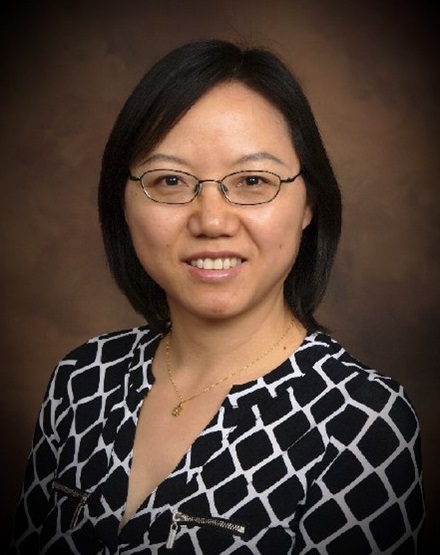
Dr. Liping Huang
Dr. Liping Huang is a Professor of Materials Science and Engineering at Rensselaer Polytechnic Institute (RPI). She obtained her B.E. and M.S. degree in Materials Science and Engineering from Zhejiang University, China, and her Ph.D. degree from the University of Illinois at Urbana-Champaign. After several years of postdoctoral research experience at the University of Michigan and North Carolina State University, she joined RPI as a tenure-track faculty in 2008. She has been the Associate Dean for Research and Graduate Programs in the School of Engineering at RPI since 2018.
Dr. Liping Huang’s primary research interest is to investigate the structure-property relationships at the atomic level in amorphous materials by using a combination of in-situ light scattering techniques and multi-scale computer simulation methods. She has published more than 100 journal papers and delivered more than 70 invited talks at international conferences and research institutions. Among other awards, she was honored with the Norbert J. Kreidl Award from the Glass and Optical Materials Division in the American Ceramic Society in 2003. In 2009, she was a recipient of the Young Investigator Award from the Defense Treat Reduction Agency in the Department of Defense. In 2013, she won the NSF CAREER award and the Alfred H. Geisler Memorial Award from the Eastern NY ASM Chapter. In 2015 she was selected as the inaugural Gordon S. Fulcher Distinguished Scholar by the Corning Incorporated in Corning, NY. She was elected as a fellow of the American Ceramic Society (ACerS) in 2020.
Dr. Liping Huang served on the executive committee of the Glass and Optical Materials Division (GOMD) of the ACerS. As the chair of the Division, she led the 100th anniversary celebration of the GOMD in 2019, and joined the Steering Committee for the UN International Year of Glass. She is a member of Technical Committee 06 on “Mechanical & Nanomechanical Properties”, Technical Committee 26 on “Structure & Vibrations”, and Technical Committee 27 on “Atomistic Modeling and Simulation of Glass” in the International Commission on Glass (ICG), co-organizes the Glass Physics, Properties and Characterization symposium for ICG 2022 in Berlin, Germany. She currently also serves as a member of the nominating committee of the ACerS, associate editor for the International Journal of Ceramic Engineering and Science, and editor of the Journal of Non-Crystalline Solids.
Glass Under Pressure
Abstract
For thousands of years, glasses have been primarily made by cooling high temperature liquids fast enough to avoid crystallization. This limits the composition range that can form glasses, the atomic structure and the resulting properties, as only a small portion of the amorphous states can be accessed. Recent studies have shown that pressure could be very effective in synthesizing novel glasses that are otherwise unattainable by the conventional melt quenching technique. Attractive properties including high elastic modulus, high hardness, enhanced ductility, high thermal-mechanical stability and reduced optical loss and dispersion, have been observed in such permanently densified glasses. Furthermore, pressure can also be used to consolidate glassy nanoparticles at room temperature to form nanoglass with a microstructure similar to its nanocrystalline counterpart. Nanoglass has nanoscale amorphous cores (“grains”) separated by glass–glass interfaces (“grain boundaries”), and provides a unique means to control the composition/structure variation on a much longer length scale than that can be accomplished in monolithic samples. Structure of pressure-processed glasses will be discussed in detail, in comparison to those from melt quenching, to understand their unique properties.
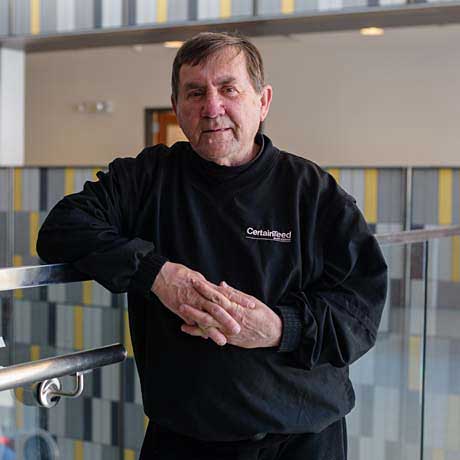
Dr. William C. LaCourse
Education
- Honorary Alumnus: Alfred University, 1986
- BS: Engineering Science SUNY at Stonybrook, 1966
- MS: Materials Science SUNY at Stonybrook, 1967
- PhD: Materials Science Rensselaer Polytechnic Institute, 1969
Research & Publications
- Accelerated ion-exchange strengthening of float and container glass.
- Bio-active and bioresorbable materials
- High Purity - Infrared Transparent Chalcogenide Glasses
- Cold Sintering of Glass
- Glass Micro-beads and hollow glass micro-balloons.
Areas of Concentration
- Surface Modification Techniques for Improved Properties - Strengthening
- Surface Modification Techniques for Improved Properties - Improved Chemical Durability
- Surface Modification Techniques for Improved Properties - Scratch Resistance
- Surface Modification Techniques for Improved Properties - Optical Properties
- New Glass Compositions for Enhanced Properties
- Novel Glass Recycling Process and Uses
John F. McMahon promoted relationships between industry and academe and advanced the education of ceramic engineers and artists during his tenure as Dean of the New York State College of Ceramics at Alfred University from 1949 to 1965. He was alert to the relevance of research while he remained compassionate
For the 68 years that McMahon was associated with the College as a student, researcher, professor, division head, dean, curator and dean emeritus, he focused national attention on the College and heralded the importance of ceramic materials to society.
As a president of the American Ceramic Society and a founder of the Canadian Ceramic Society, Dean McMahon influenced ceramic engineering and education far beyond Alfred, New York. Honorary doctorates from Alfred University and Clemson University recognized his contributions to the field of ceramics throughout the world.
McMahon led the College to consider the vital needs of industry while maintaining a strong academic tradition of basic fundamental research and education. Long before others seriously considered ceramic materials for automobiles, John explored the idea with General Motors and saw promise of the use of ceramic materials in automobiles.
As a further tribute to one of the outstanding leaders of the New York State College of Ceramics, in 1987 Alfred University created the John F. McMahon Chair in Ceramic Engineering, to be filled by a notable ceramic engineer or scientist who exemplifies Dr. McMahon's ideals and who focuses national attention on the importance of ceramic materials and the role the New York State College of Ceramics plays in that field.
Dr. Richard M. Spriggs, Professor of Ceramic Engineering Emeritus, was appointed the first John F. McMahon Professor; Dr. James E. Shelby, Jr., held the position October 1997 - September 2008.
Biography
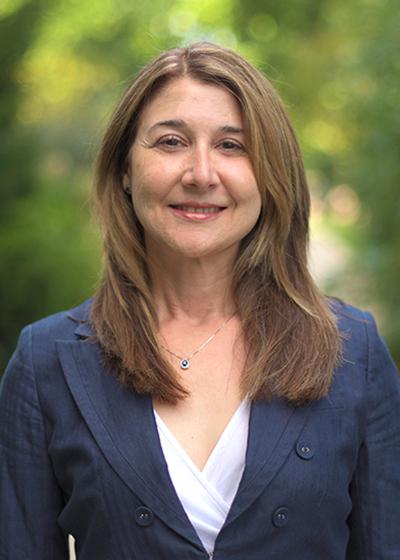
Prof. Susan B. Sinnott is Professor and Head of the Department of Materials Science and Engineering at The Pennsylvania State University, where she also holds a faculty appointment in the Department of Chemistry. She earned a B.S. in Chemistry from the University of Texas at Austin and a Ph.D. in Physical Chemistry from Iowa State University. She went on to be a National Research Council Postdoctoral Associate at the Naval Research Laboratory. Dr. Sinnott began her career in academia in 1995 as an Assistant Professor of Materials Science and Engineering at the University of Kentucky (UK). During this time, she received the Oak Ridge Associated Universities Ralph E. Powe Junior Faculty Enhancement Award in Engineering and the UK College of Engineering Tau Beta Pi and Department of Chemical and Materials Engineering Outstanding Teaching Award, Materials Program in 1996 and 1998. She moved to the University of Florida (UF) in 2000, where she was an Associate Professor, Professor, and Alumni Professor in the Department of Materials Science and Engineering. While at UF, Dr. Sinnott received the UF Florida Faculty Excellence Award on five separate occasions, was a UF Research Foundation Professor and Florida Blue Key Distinguished Professor and received the UF College of Engineering Doctoral Dissertation Mentoring Award and the UF College of Engineering Teacher/Scholar of the Year Award. In 2015 Dr. Sinnott moved to Penn State University, where her accomplishments were recognized in 2022 with a Penn State Faculty Scholar Medal in Physical Sciences, the University of Michigan Department of Materials Science and Engineering Van Vlack Lecturer Award, and the American Vacuum Society (AVS) Medard W. Welch Award (as only the second woman to be awarded this top AVS award since 1970). Dr. Sinnott is the author of 290+ technical publications and is a Fellow of the Materials Research Society, American Physical Society, American Ceramic Society, American Vacuum Society, and of the American Association for the Advancement of Science. She is a Professional Member of the New York Academy of Science, a past President of the American Vacuum Society, and the Editor-in-Chief of Computational Materials Science.
Abstract
Computational methods are useful tools in the investigation of atomic and molecular dynamics and associated mechanisms at surfaces and interfaces. Physics-based classical potentials are a class of computational method that is useful for use in classical atomistic simulations of systems made up of thousands to many billions of atoms. These potentials consist of parameterized functions that capture aspects of atomic and molecular interactions within these material systems.
The focus of this presentation is on the third-generation charge-optimized many body (COMB3) potential. COMB3 was developed to enable an atomic-scale description of systems that include combinations of metallic, ionic, and covalent bonding under the same framework. The framework enables the system to determine the charge state of an atom or ion and manifest the physically appropriate type(s) and strength of local bonding as a function of environment correctly and autonomously. The framework further includes a combination of atomic-specific, bond-specific, bond angle-specific parameters; the former is the same regardless of material, and only new bond-specific and bond angle-specific parameters are required to extend existing elements to new compounds.
This presentation will provide an overview of the COMB3 potential and illustrate its utility in the study of water-metal surface and nanoparticle interactions, the examination of carbon nanoparticle-metal surface interactions, and the mechanisms associated with the growth of metal films on metallic and oxide substrates.
Biography
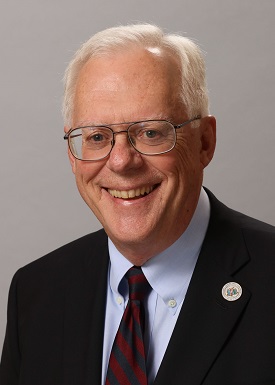
Dr. McCauley grew up in New York City. He earned his B.S. (Cum Laude) in geology (minors in mathematics, chemistry, religion, and philosophy) from St. Joseph's College, Indiana (1961) and both his M.S. (1965) in mineralogy and petrology (geochemistry) and Ph.D.(1968) in solid state science (crystallography) from The Pennsylvania State University. He also completed an Executive MBA program at Northeastern University. After two years as a Research Assistant in Solid State Science (full time staff position) at Penn State, he took a job at the Army Materials and Mechanics Research Center in Watertown, Mass. in 1968 starting as a research scientist. He rose to become the founder and Division Chief of the Materials Characterization Division leaving for Alfred University in 1990. In 1988 he served as a Liaison Scientist, in the Army Research Office, Tokyo, Japan. During 1984 to 1986
He was a Adjunct Professor, Boston University. From Alfred he went to the Army Research laboratory in 1997. He retired from the U.S. Army Research Laboratory in 2013 from his executive position as the Army's Chief Scientist (ST) for Advanced Materials. Among his many awards include the 2007 Senior Scientific-Professional (ST) Employee Presidential Rank Award and the Army's Lifetime Achievement Award. He is the past chair of the Army's Chief Scientists and the ARL Fellows. In addition, Dr. McCauley was honored by Penn State University as an MRL Distinguished Alumni, a Centennial Fellow of the College of Earth and Mineral Sciences and the 2011 Charles L. Hosler Alumni Scholar. He is a Past President, Fellow, and Distinguished Life Member of the American Ceramic Society.
From 1990-96, he served as dean (SUNY Unit Head) and professor of ceramic engineering at the New York State College of Ceramics at Alfred University. His publications have been cited over five thousand times. Over the years, Dr. McCauley has served on multiple boards and committees and has been active in the community. He retired from the Harford Community College Board of Trustees in 2021 after 8 years of service. He has been a Adjunct Research Scientist in the Johns Hopkins Extreme Materials Institute (HEMI) since 2014. He worked extensively in Japan and in Germany at the Ernst Mach Institute. He is most known for his pioneering research on CaCO3 crystal growth and fabricating high pressure aragonite in ambient conditions, mica crystallography, ceramic matrix composites, AlON, which he named and published first patent, self-propagating high temperature synthesis (SHS), and more recently on the shock-induced localized amorphization in boron carbide with Chen and Hemker. Recently, he has been involved in determining the high stress/high strain rate mechanisms of deformation and failure of transparent and opaque hard ceramics. He is also very proud of conceiving and initiating the 10 year “Materials in Extreme Dynamic Environments (MEDE) program managed at Johns Hopkins University in collaboration with the Army Research Laboratory.
He has published a total of 142 papers, edited or co-edited 13 books and has 5 patents.
These are some of his other awards: Prometheus Award, National Research Institute in Materials, Tsukuba, Japan, January 1990, Honor Professor, Jingdezhen Ceramics Institute, PR China, 1995 Academician - World Academy of Ceramics – July 2004, Jubilee medal from the Russian Academy of Sciences, Chernogolovka, Russia, October 2007.
Abstract
Boron carbide, nominal compositions between B13C2 and B12C3), began being used for personnel armor and helicopter seats in the Vietnam War (1961-1975) spawning DARPA funded classic modeling and testing research at the Lawrence Radiation Laboratory from 1967 to 1972. During this program, the anomalous “quasi-plastic” behavior of AlN and BeO was documented, which seemed to enhance expected behavior. The Middle East wars, from 1980 on, further led to DoD and Army planning and policy changes and to more interest in light weight and more controlled performance for both transparent and opaque structural ceramics. In 1997 the DoD Research and Engineering office (DDRE) challenged the DoD chief scientists to use an “Atoms to Armor” modeling approach to create a predictive advanced materials capability. Following this, the Army Research Laboratory established a Army Strategic Basic Research Objective (SRO) in 1998 - “Armor Materials by Design”. This was a paradigm shift to parallel experimental, modeling and theoretical activities for defined performance/applications and implemented in the ARL laboratories and the ARL Material Centers of Excellence at Johns Hopkins and Rutgers Universities in 1998. During this time collaborative work at JHU and ARL further emphasized the importance of multiscale effects with the observation of nano-amorphization in dynamically tested boron carbide. Two studies followed: a workshop at ARL in 2008 on “Multiscale Materials Behavior in Ultra-High Loading Rate Environments” and a Board of Army Science and Technology (BAST) and National Research Council National Materials Advisory Board (NMAB) “Committee to Review Opportunities in Protection Materials Science and Technology for Future Army Applications” in 2009. A major conclusion from these activities was that DoD should establish a defense initiative for protection materials by design including computational, experimental, including materials testing, characterization, and processing research conducted by government, industry, and academia. Following these recommendations, after a very rigorous competitive process, the U.S. Army Research Laboratory in 2012 funded a ten year, $100M Collaborative Research Alliance (CRA) program entitled “Materials in Extreme Dynamic Environments (MEDE)” with Johns Hopkins University as the lead University and Professor K. T. Ramesh as the recipient program manager; the objective was to develop the capability to design, optimize, and fabricate lightweight protection material systems exhibiting revolutionary performance using a “Materials by Design” approach. Four materials were chosen: boron carbide, Mg, UHMWPE (Ultra-High Molecular Weight PolyEthylene), and S-glass/epoxy. The fundamental purpose involved the more detailed understanding of deformation and failure mechanisms from atomic to microstructural scales in relevant high strain rate and high stress regimes.
Past figures of merit will be reviewed, and new ones proposed. Contrary to most quasi-static mechanical environments, where structural ceramics will fail from the largest defect, in high strain rate environments, many defects will be activated during the dynamic event; this requires specialized dynamic testing methods which will be discussed. The dynamic mechanisms and the role of defects in crack initiation and failure are reviewed for boron carbide and other ceramics. The importance of quasi-plasticity in dynamic events has been reinforced over the last few years: A definition and a measurement technique will be proposed and used in a simple equation to predict dynamic performance. Since nano-amorphization occurs in single grains of polycrystalline boron carbide, anisotropic crystal physics (elasticity, thermal expansion, thermal conductivity) plays a role in deformation and failure.
A peculiar feature of boron carbide is the occurrence of intragranular processing planar features (often referred as “twins”) and planar deformational features (nano-amorphization), similar to planar amorphous bands in meteor crater quartz. A new, proposed interpretation of the B-C phase equilibrium diagram will suggest the exsolution of B13C2 and B12C3 in the “solid solution” region as the origin of the processing planar features. Finally, the usefulness of a canonical FOM equation to create a unity of effort on a common purpose, possible only when there are common mutually understandable goals and requirements will be presented. All research participants understand their roles and can articulate their contributions to the overall progress and success.
